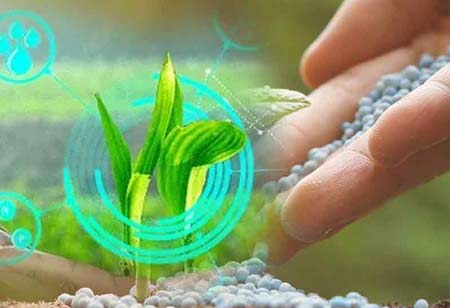Thank you for Subscribing to Agri Business Review Weekly Brief
Role Of IoT in Agriculture
The agriculture industry is one of the essential elements of civilization. Agriculture offers food

By
Agri Business Review | Saturday, September 03, 2022
Stay ahead of the industry with exclusive feature stories on the top companies, expert insights and the latest news delivered straight to your inbox. Subscribe today.
This article investigates how the Internet of Things can improve agricultural output, reduce resource consumption, and even help decrease carbon emissions.
Fremont, CA: The agriculture industry is one of the essential elements of civilization. Agriculture offers food and natural byproducts to humans around the planet and economically supports about 25% of the world's population.
Still, agricultural production is now being challenged to produce more output with fewer resources as the world expands. This article investigates how the Internet of Things can improve agricultural output, reduce resource consumption, and even help decrease carbon emissions.
Smart Farming Technologies
While agriculture has occurred for longer than recorded history, its methods went unvarying until the industrial revolution. For many millennia, farming consisted of large spans of land, natural sunlight, natural and artificial irrigation, and natural predators.
Over the last few centuries, humans have increased and optimized the output of traditional, old-school farming by increasing land size, employing more complex irrigation technology, and reducing predation with pesticides. Still, this methodology's long-term influence is progressively taxing on ecological and human health.
Fortunately for our planet, the Internet of Things has supported the agriculture industry make huge strides toward the future of smart agriculture. Companies are developing smart precision agriculture technology that gathers data to help farmers make more informed decisions and reduce resource consumption.
For instance, their IoT-enabled guidance systems can direct their large-scale tractors with an accuracy of +/- 6 inches, reducing the number of harvesting passes through a field.
Many companies are creating new, modern data collection solutions that can help keep agriculture professionals aware of their resources on a small & large scale. For instance, the company offers state-of-the-art, drone-powered multispectral analysis products that can detect key performance indicators in the soil, like moisture, temperature, and vegetation location, and allow farmers to identify and target problems in an exact location.
As one of the greatest IoT-powered sub-industries in agriculture, soil monitoring technologies provide farmers with real-time, large-scale soil metric data. This enables them to fertilize and irrigate their farms more precisely to increase efficiency and decrease resource consumption.
Smart farming technologies are prospering, and new exciting IoT farming technologies are cropping daily (pun intended). The IoT Agriculture and Smart Farming market are expected to surpass 23 billion by 2022.
Vertical Farming
Also, given the massive strides in traditional agriculture methodology, modern-day outdoor agriculture still has its pitfalls. The agriculture industry is accountable for 1/5th of all greenhouse emissions and 70% of global freshwater consumption.
The application of synthetic fertilizers has noted negative impacts on biodiversity and human health, and the manufacture of synthetic fertilizers accounts for 50% of the energy intake within the agriculture industry. Still, some agricultural pioneers are changing how agriculture can be done.
Technologies like aquaponics, combining aquaculture (raising fish) and hydroponics (cultivating plants in water), redefine how we grow food. Aquaponic farms can ingest 95% less water while utilizing zero pesticides, as the need for pest management can be relieved by taking farming indoors. Also, aquaponic farms can be implemented vertically, increasing the productivity per square foot by orders of magnitude more than traditional farming.
Nonetheless, these closed systems need robust and complex monitoring systems to ensure that nutrient levels are safe and accurate for fish and plants. Also, these systems often monitor and control the light wavelengths to which plants are open to regulate plant health and growth.
Vertical aquaponic farms employ less water, use no pesticides or synthetic fertilizers, and don't require carbon-discharging equipment, making them a possible alternative to the conventional farming of many staple crops globally.
IoT in Agriculture
Smart farming has swiftly grown to be a global industry. It has been attained by implementing agriculture-geared IoT technology, like smart-farming communication networks, dedicated sensor networks, agriculture-geared monitoring systems, and even more.
Agricultural IoT makes machines smarter, provides more data to farmers, and enables fundamental changes to how farms work. Undoubtedly, smart farming will only get smarter, and the Internet of Farm-Things will continue to grow.





